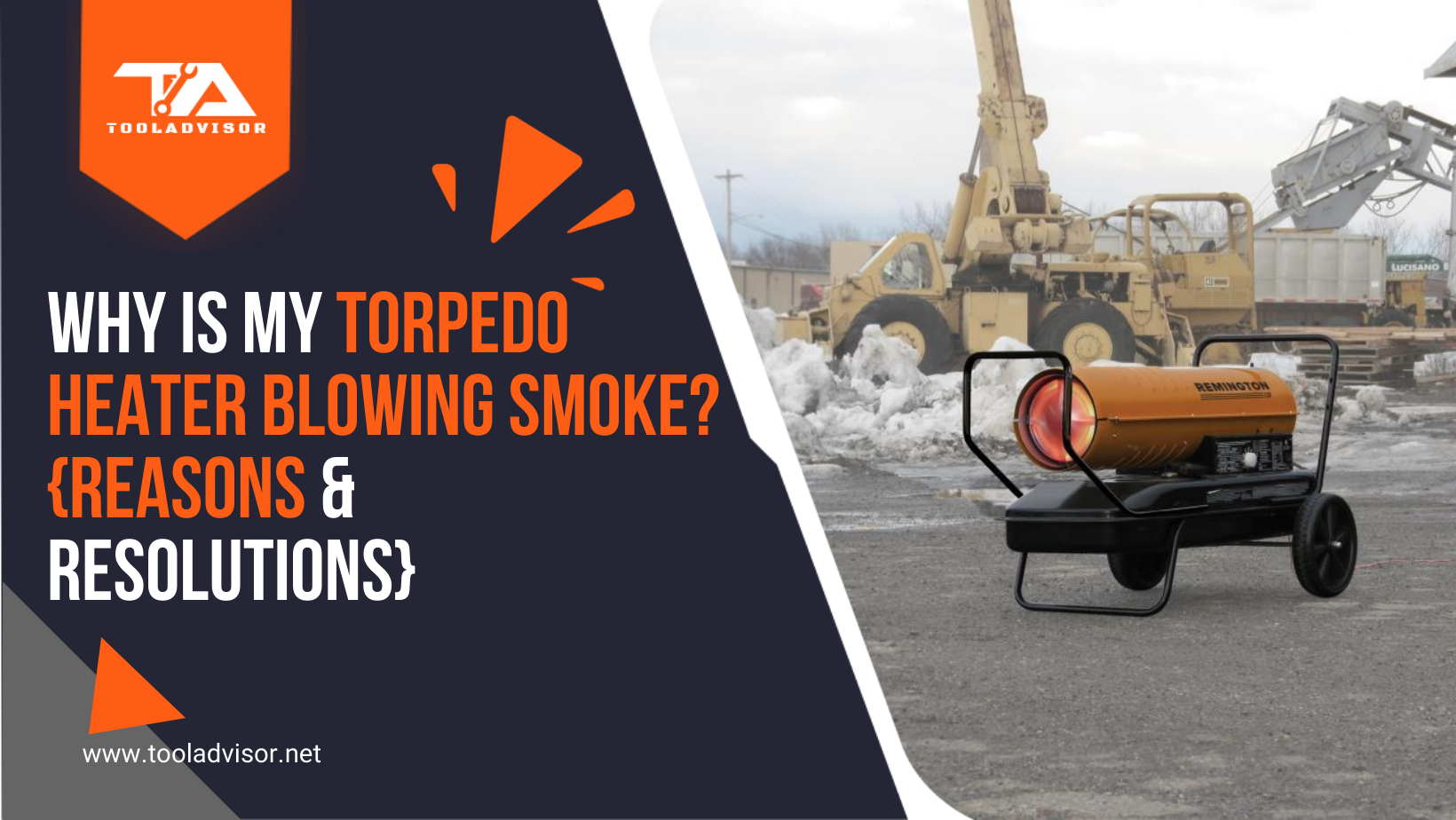During the chilly months of winter, we look for different ways just to stay warm – both inside and out. You may burn logs in your fireplace, use an electric blanket to warm up the bed, or turn up the thermostat.
However, a torpedo heater is a great option that people today go for to keep the temperature cozy. It comes in handy, especially for heating a yard, a patio, construction sites, garages, etc.
Now:
One thing that’s always significant to remember when using space heaters is that you have to be cautious of the object in contact or proximity with the heater that can cause fires and, eventually, smoke.
Table of Contents
Torpedo Heater: What is it & How it Works?
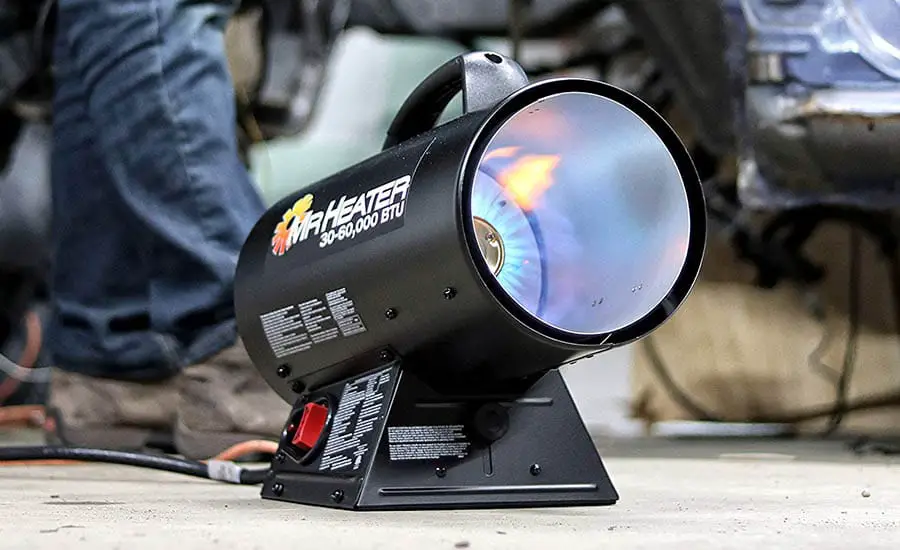
Torpedo heaters are a kind of heater used to warm up rooms and other places during chilly months. Alternatively known as forced-air heaters, a torpedo heater consists of a fan that transmits warm air throughout a space. Thanks to their powerful motors and heating elements, they draw in the air via the back and pass it through a cylinder. Then, it emits heated air, forming warm convection currents.
Electric torpedo heaters are connected to a 110V or 220V outlet. However, if there is no outlet near the room you want to heat, you will need an extension cord. Just make sure it’s rated to carry the electrical load and that you aren’t sharing the outlet with another powerful device. Likewise, you can prevent overloading.
Nevertheless, the heating capacity of a heater will vary according to the brand and model. And it’s denoted by BTUs (British Thermal Units) or the number of watts. So you can choose a heater appropriate for the space you want to heat based on the heating capacity. However, while top manufacturers usually make electric heaters of weather-resistant hardware, they are suitable for outdoor use.
Like any other electric and fuel run devices and instruments, these torpedo heaters, too, have to go through wear and tear while functioning. And the most common issue that surfaces in a kerosine-fueled torpedo heater is that it starts blowing smoke. Here in this article, we will be discussing why your torpedo heater could emit smoke and ways to fix it.
Also Read: What is Torpedo Heater, And How Does it Works?
Reasons Why Your Torpedo Heater is Smoking?
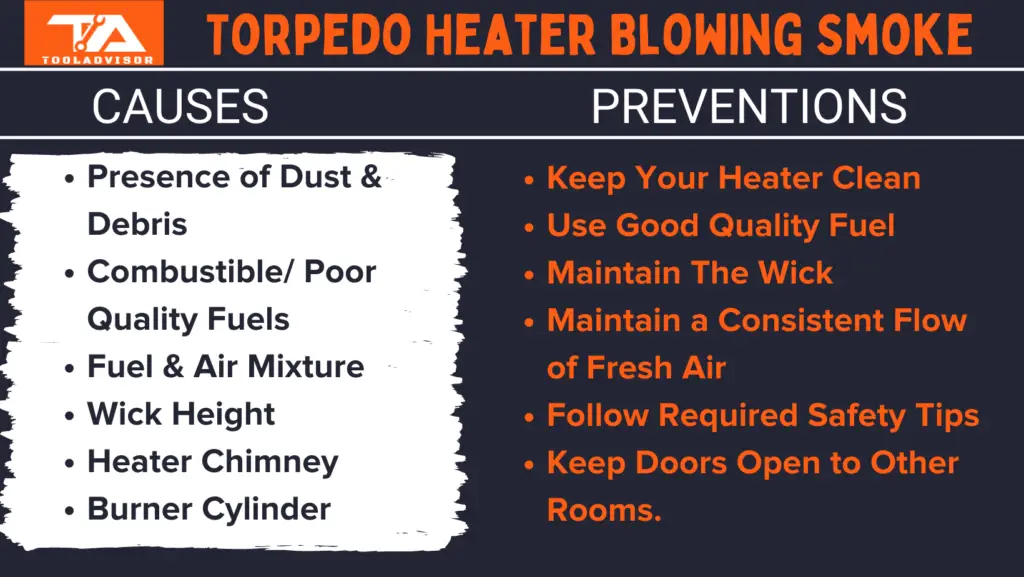
From lawn decorations, garages, and construction sites to indoors, kerosene torpedo heaters are used everywhere. Admittedly, they are energy-efficient and excellent. However, the smoke emitting problem makes the ambiance and air of the heating space unhealthy. Moreover, smoke is accompanied by bad odors that can be challenging to remove. The toxic fumes can catch fire and lead to massive accidents. So the question is –
What causes smoke in a kerosene torpedo heater?
The fact is that kerosene is strong and quite smelly by its nature. It will circulate smoke and strong odor if not maintained properly. Here are certain things that can trigger smoke in your heater. Take a look!
1. Presence of Dust & Debris
Can you recall when you turned on your device the last time? The heater can accumulate debris and dust over an extended period when not in use.
And when you finally take out your heater to use in winter, it collects a thick layer of dust. As soon as you turn on the device, it can burn off, producing smoke.
However, don’t fret, as the smoke and odor will dissolve once it burns off. Thus, it’s necessary to clean your torpedo heater routinely to prevent the collection of bacteria or dust.
2. Combustible/ Poor Quality Fuels
If you use gasoline or other combustible fuels, it will burn too hot, resulting in smoke. Poor quality fuel causes intolerable strong smoke and also, smell. Thus, it’s always recommended to use only quality 1-K kerosene.
Are you unaware of the fuel in your kerosene heater? Then simply remove it, change the fuel, and wick. Besides, it’s necessary to change the fuel regularly. Cheap quality fuel generates carbon monoxide, and burning it results in excessive smoke.
3. Fuel & Air Mixture
Sooty black can even result from the mixing of fuel and air. Make sure you haven’t placed your heater beneath a ceiling fan or in a draft. If there’s too much air, it can cause a high flame condition.
4. Wick Height
If there’s orange flame all around, it might be because the wick is too high. In that case, try to roll down the adjustable wick knob within the requisite range.
The wick has to be properly set when using a kerosene heater. The recommended wick height is 1.3 cm. Make sure to check the wick from time to time. Keep in mind:
The fuel in your heater might be over, and the wick burns dry. However, it will yet result in strong smoke and smell.
5. Heater Chimney
Check whether the chimney is placed properly. Otherwise, there can be a high flame on one side after lighting the heater.
6. Burner Cylinder
If all these tips don’t solve the issue, you need to wait for the heater to cool down and check its burner cylinder. Then, clean the holes if plugged with soot or replace the buckled and dented pieces.
In case you don’t see any obvious defect and the wick is placed properly, it would be best to call experts or take it to the service center.
3 Ways to Prevent Your Torpedo Heater from Smoking
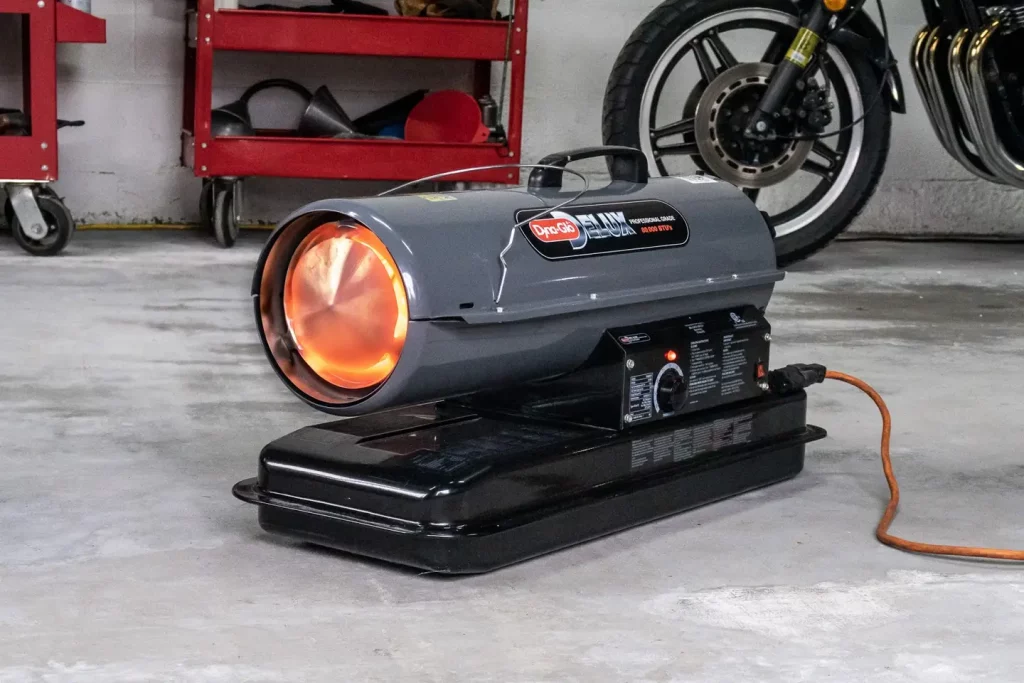
Now you know the culprits that can cause smoking in your heater. However, it will be easier to get the solutions to these issues. Follow the guidelines given by the manufacturers and maintain the heater properly. You can easily avoid smoke and smell.
1. Keep Your Heater Clean
It’s important to clean your heater properly. Kerosene heaters can spill and spread smells while operating. In that case, you have to clean it immediately and deeply. The leftovers can produce intolerable odors. Also, clean dust and debris regularly.
When using a portable kerosene torpedo heater, you have to bestow substantial time on getting fuel, fuelling it, and maintaining it routinely.
2. Use Good Quality Fuel
It’s better to use clear, good quality 1-K grade kerosene to run your heater for odourless, clear burning. The quality fuel will control the smoke level by holding yet generating the best heat.
Your heater will emit smoke and odor if the kerosene is cloudy or coloured. This is because the fuel contains a high amount of sulphur, enhancing sulphur dioxide emissions.
3. Maintain The Wick
Inspect the wick each week when not in use during the heating months. If it has collected dirt, clean it following the manufacturer’s instructions in the manual. However, the wick can gum up if you don’t use 1-K grade kerosene.
Other Preventions
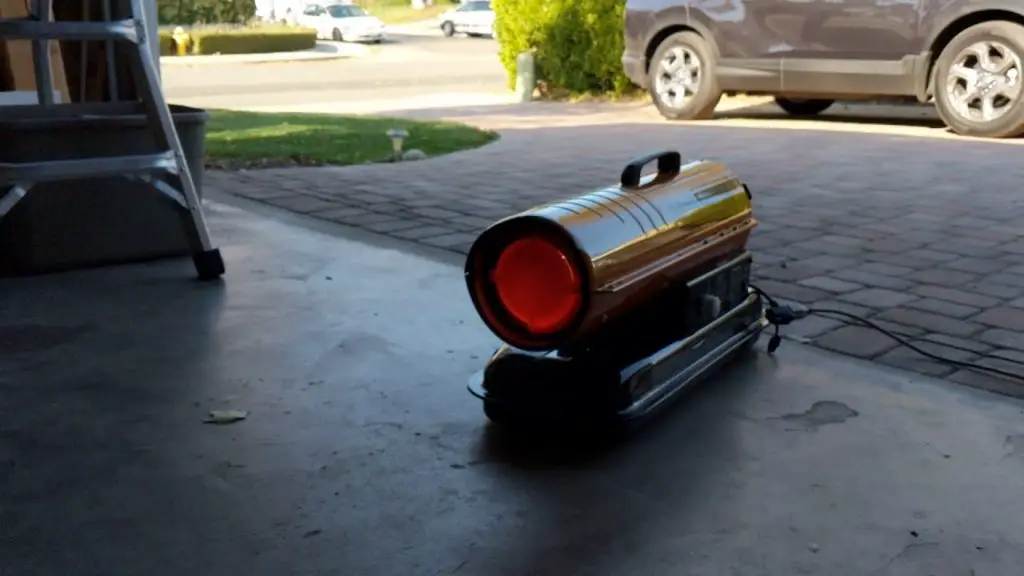
- Keep your heater several feet away from curtains, furniture, bedding, clothes, papers, and combustible materials.
- Keep babies, young children, and toddlers away from the heater. Touching the open flame in the heater can cause serious damage.
- Don’t try to move a running kerosene heater. Move it after extinguishing the flame, and the heater cools down.
- A kerosene heater shouldn’t be refuelled when it’s hot or in living rooms. You need to wait for the heater to cool.
- It’s better to turn off the torpedo heater before going to sleep.
Note that you can prevent fire and other serious hazards with a kerosene torpedo heater; if you –
- Maintain a consistent flow of fresh air
- Follow required safety tips
- Keep doors open to other rooms.
Read More: Dyna-Glo Delux KFA80DGD Kerosene Forced Air Heater
Frequently Asked Questions
We have answered the most common questions that users generally come across to help you get a better hang of proper maintenance, precautions, and preemptive measures to avoid any untoward incidents and commonly arising problems.
How do Torpedo heaters cause fires?
If you want to apprehend how your space heater can cause fire, you must first ascertain the device’s common dangers.
• The first jeopardy is the amount of current the heater consumes during operation.
• The standard current rating for electric torpedo heaters is usually 1500W or nearly 12.5-Amp.
• This rating makes it safe to use in the home. The power cord, heater, electrical wiring, and other technical features are working perfectly.
• Also, you are using one heater per electrical circuit.
• If there’s any malfunction or fault in any essential elements, it can cause failure resulting in fire and smoke.
In the case of portable electric heaters, the common issue is employing undervalued extension cords. Manufacturers usually recommend connecting the device straight to any electrical repository, ensuring safety. So it’s important to note that –
You shouldn’t connect electrical torpedo heaters to an electrical power strip or extension cord. However, you can do so if you know that their electric rating is more than your heater’s electrical capacity.
If you use an undervalued cord, it can overheat the cord’s wiring materials. Eventually, it can cause potential hazards, burns, or a short circuit resulting in fire.
Moreover, users should maintain at least three feet of clearance from torpedo heaters. However, torpedo heaters from top manufacturers are today equipped with top-over safety features that prevent overheating or other hazards. But the fact is that most consumers can’t dig out whether the objects surrounding them are in danger of ignition or are overheating.
How to Maintain your Torpedo Heater During Summer?
Before storing your kerosene torpedo heater for the summer, you need to do these things –
• Take off the fuel completely from the tank. Kerosene tends to undergo a chemical transformation and gets damaged over the summer.
• Clean off the dirty wick. If the wick is worn out, replace it – follow the manufacturer’s instructions.
• If the batteries are weak, discard them and clean the heater. Get good batteries, tap their ends, and store them in a dry place.
• Store the device and its accessories in moisture-free and dust-free containers. The best thing would be to keep it in the heater in which it came.
What to do After Taking out the Heater from Storage?
Insert the batteries in place. Then, check the wick and shut-off system to ensure they operate smoothly.
Fill in the heater’s tank with fresh 1-K kerosene. Don’t use the old fuel from the last heating season. It might have got spoiled.
Why doesn’t your kerosene heater light?
Did the lighting happen for the first time? Then, check the kind of fuel you have used in your heater. You should use good-quality 1-K kerosene, and the wick should be soaked for 60 minutes in a full fuel tank. When the wick becomes entirely saturated with the fuel, it lights perfectly.
Check whether the igniter and wick are in the correct position. The igniter’s position should be above the wick as it will light the kerosene vapors. If its position is incorrect, like to the wick’s side or touching the wick, it won’t light. So adjust the wick and igniter to the right position.
On the other hand, check the batteries if you see that the igniter isn’t glowing orange. You may need to replace them. However, never use non-alkaline batteries as they generate stronger jolt and also can blow the igniter.
Another reason might be a broken igniter filament. So if it’s broken, replace it.
Why isn’t your igniter glowing?
The batteries are likely dead. Install only non-alkaline batteries. However, if your heater runs on non-alkaline batteries but yet it’s not glowing, then you might have to replace the igniter. Make sure to place the igniter properly above the wick to prevent igniter burn-out.
Overall, kerosene heaters can pose a serious threat if you aren’t familiar with their proper operation. However, you can avoid most hazards and risks by following the instructions stated by the heater’s manufacturer.
Conclusion
Undoubtedly, torpedo heaters work impressively to warm up outdoor and indoors. However, the only thumbs down is that they can produce smoke. But the good news is that you now know what can probably cause smoke in these heaters and how to stop it. So follow the basic things and suggestions to maintain a healthy environment around you while running your torpedo heater.
